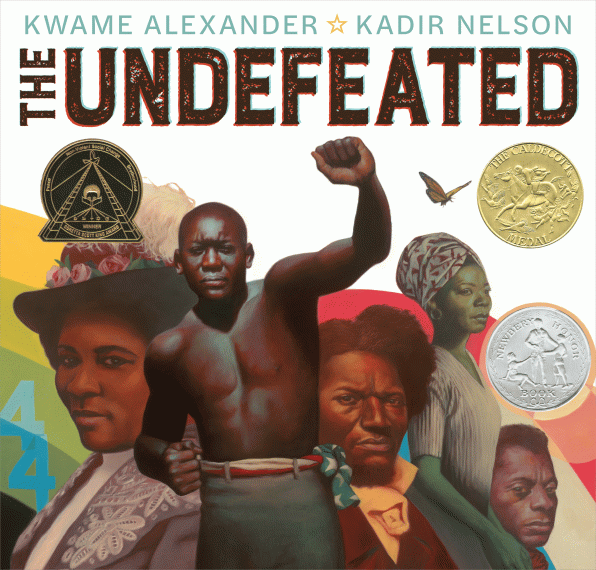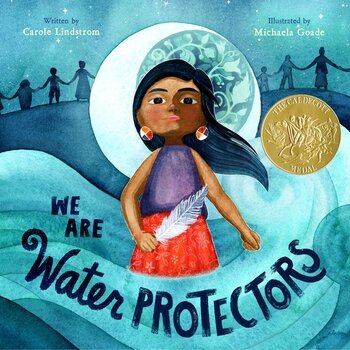I am currently serving as the organizer of the postgraduate reading group for the Centre for Childhood Cultures (CCC) at Queen Mary University of London, a group that meets every other week to discuss aspects of children’s literature or childhood culture. At our first meeting of the term, we discussed children’s book awards — what kind of book gets awarded, who is on the awards committee, and the legacy of winning an award. One of our goals for this term has been to start using our research blog. To that end, we’ve been taking time in our reading group for a ‘free write’ session after our meetings to jot down some ideas we’ve had while discussing our topic for the week. Then, we turn those ideas into blog posts! Here is my first blog post for the CCC blog. To visit it on the CCC blog, click here.
*****
In 1951 Lillian Hollowell, an associate professor of English at Murray State College in Kentucky, asserted that, in choosing the Newbery and Caldecott award-winning books, ‘time tells the story here as elsewhere. Great books live… Only time can estimate the far-reaching influence of book awards in the field of children’s literature’ (Hollowell, 491). Indeed, winning a Newbery or Caldecott does seem to ensure at least some publication longevity: even a few early Newbery winners, like The Voyages of Doctor Dolittle by Hugh Lofting (Newbery winner 1923), Caddie Woodlawn by Carol Ryrie Brink (Newbery winner 1936) and Twenty-One Balloons by William Pène du Bois (Newbery winner 1948) are still found on shelves in bookshops large and small.
If an unstated goal of the Newbery and Caldecott awards is to award books with the potential for far-reaching influence through the longevity of their relevance, how, then, does the time period of a book fit into its consideration for one of these two awards? Is a book more likely to succeed if it feels ‘timeless,’ rather than engaging with current issues?
Writing in 2016, Miriam Martinez, Melanie D. Koss, and Nancy J. Johnson discovered that in the 25 years preceding their study, 56% of the Caldecott medal and honor books with human characters were set in the past, while only 38% were contemporary. They note that over time, however, there has been an increase in contemporary settings. I have found this same trend in the Newbery-winning books: from 1995 to 2010, nine of the sixteen books selected for the medal were historical fiction, and one was science fiction. All six of the medal-winning books from 2000-2005 were historical fiction. Yet, of the twelve medal-winning books from 2010-2021, only two books have been historical fiction, and one fantasy.
Past Caldecott contenders, such as The Adventures of Beekle: The Unimaginary Friend (2015 Caldecott winner) or This Is Not My Hat (2013 Caldecott winner), or even Me… Jane (an illustrated biography of Jane Goodall, Caldecott honor 2012) tend to prioritize a certain sense of the timelessness and universality of childhood experiences, and they often exist in fantasy space. They read as non-controversial, or even feel-good stories. They seem to want young children (and, perhaps even more, adults) to marvel at their illustrations and to learn lessons about inclusion or to find inspiration to achieve their dreams.
In the past five years, however, the Caldecott award-winning books have seemed to engage with contemporary issues in a way that historically they have not. Perhaps the timely can also be the timeless. Kwame Alexander’s The Undefeated (2020 Caldecott winner), illustrated by Kadir Nelson, celebrates Black American history and even includes a direct reference to the Black Lives Matter movement.
This year’s Caldecott winner, We Are Water Protectors by Carole Lindstrom, illustrated by Michaela Goade, signals a continuation of the trend to choose books that focus on important issues of our moment. We Are Water Protectors, even in its very title, is bound to be a controversial pick for some Americans. It is a tale that directly calls on us to act to protect the environment, and it recalls the recent maltreatment of indigenous communities surrounding the protests over the Keystone Pipeline. The book itself centers around the Dakota Access Pipeline – rendered as a reference to the Ojibwe tribe’s Black Snake Prophecy. Michaela Goade is the first indigenous artist to win this award in its eighty-three-year history.
While this book’s focus on the Dakota Access Pipeline and impending environmental disaster is timely, does not the destruction of the environment and the destruction of indigenous communities have an unfortunate timelessness in American history, too? The fact that this is the first Caldecott-winning book with both an indigenous author and illustrator speaks volumes to the suppression of Native American voices in both publication and in prestigious recognition. Yet, in the very act of awarding We Are Water Protectors the Caldecott, perhaps we have begun to take the first steps towards rectifying some of the wrongs that this book, by its very existence, calls into question.
About the author: Abigail Fine is a third year PhD student at QMUL. Her research focuses on Cinderella adaptations in the twentieth and twenty-first centuries, with an emphasis on Young Adult and Middle Grade adaptations.
References and Further Reading
Hollowell, Lillian. ‘Children’s Book Awards.’ Elementary Education. December 1951. Vol 28, No. 8, p 468-474, 491.
Martinez, Miriam, Melanie D. Koss, and Nancy J. Johnson. ‘Meeting Characters in Caldecotts: What Does This Mean for Today’s Readers?’ The Reading Teacher. July/August 2016. Vol 70, No. 1, p 19-28.
List of all ALA Newbery Medal and Honor Books:
http://www.ala.org/alsc/awardsgrants/bookmedia/newberymedal/newberyhonors/newberymedal
List of all ALA Caldecott Medal and Honor Books:
http://www.ala.org/alsc/awardsgrants/bookmedia/caldecottmedal/caldecotthonors/caldecottmedal


